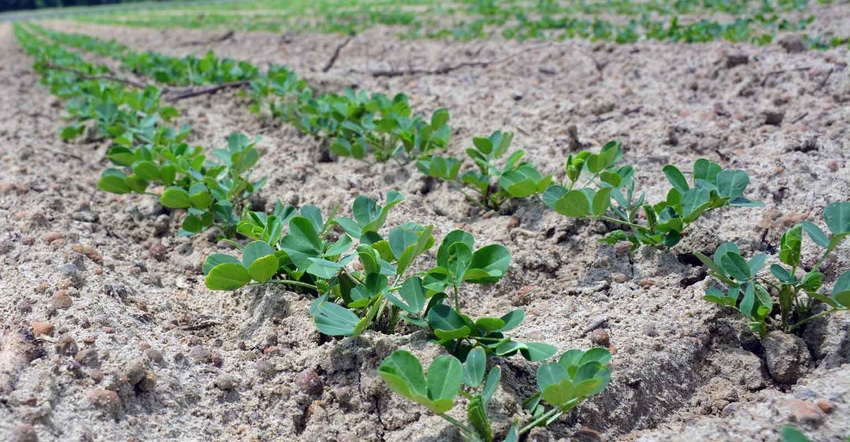June 15, 2022

This growing season so far, Alabama and north Florida row crop fields have received good, and at times maybe too good, rainfall, and so have regions in Georgia and South Carolina. But some location remained held in dry weather patterns.
Alabama received sufficient rain throughout the week of June 6. Crop conditions and soil moisture for the state remained mostly good and excellent. Corn continued silking but remained behind the previous year and 5-year averages, according to the June 13 weekly USDA Crop Progress and Condition Report.
Some cotton producers were concerned about delayed harvest due to large amounts of rain received in central Alabama. Peanut planting neared completion and peanut pegging had begun. Rain delayed soybean planting and winter wheat harvesting. In Alabama, the majority of corn, cotton, soybeans and peanuts were rated good to excellent, according to the report.
Conditions were drier in some parts of Georgia, where producers were concerned about soil moisture. Pivots ran during the week of June 6 to reduce the impact of low soil moisture. Corn continued to tassel and silk. Southern rust was confirmed in some southern counties. Scouting for the disease continued.
Cotton and peanut plantings were completed or very near completed. Soybeans developed well and producers were busy preparing fields for planting behind small grains. Wheat yields were looking good. According to the U.S. Drought Monitor, south-central Georgia remained under abnormally dry conditions. A narrower, but crop heavy, swath within the south-central region was classified in moderate drought. Georgia’s upper coastal region was classified in severe drought. A line of thunderstorms crossed over the south-central part of Georgia experiencing dry conditions on June 14.
In Florida, rainfall provided good stand establishment in cotton and peanuts. Peanut and cotton planting neared completion. Cotton producers noted some cotton was beginning to square, according to the June 13 report.
Soil moisture continued be in favorable conditions. A variety of fruits and vegetables were harvested throughout the state last week. The central-panhandle region, where much of the state’s row crops are grown, reached the abnormally dry status on the drought monitor.
In South Carolina, limited rainfall and hot temperatures caused fields to dry up in the southern part of the state. The southern tip of the state had entered severe drought, according to the drought monitor. The southern coastal region experienced moderate drought, and the south-central part of the state remained abnormally dry, according to the drought monitor.
South Carolina producers noted the need for more rainfall to help their crops. Fields that were irrigated continue to develop, while non-irrigated fields showed signs of drought stress and damage. With the dry conditions, pest pressure was noted on many different crops. Producers were finishing planting of cotton and peanuts.
Some producers noted cotton began squaring, while peanuts began to peg. Corn producers noted much of their crop has started silking. Winter wheat harvest continued to progress, while hay producers had nearly completed their first cutting of the season. Producers continued planting soybeans with much of the crop already emerged.
About the Author(s)
You May Also Like






